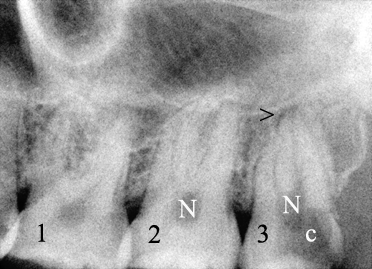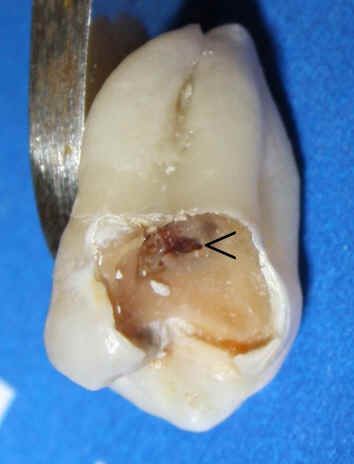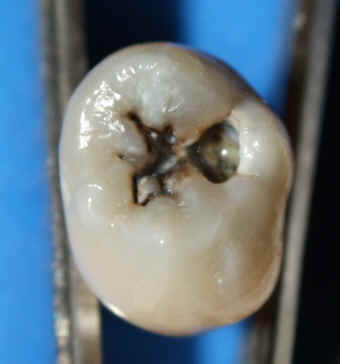 |
 |
|
Fig.1 |
Fig.2 |
|
|
 |
|
Fig.3 |
Fig.4 |
 |
 |
|
Fig.1 |
Fig.2 |
|
|
 |
|
Fig.3 |
Fig.4 |
Dental Education Lecture: Cavities in Upper Wisdom Teeth
Wisdom teeth are also called the 3rd molars (3 in Fig.1), because they are behind the first (1) and 2nd (2) molars. In fact the wisdom teeth are in the farthest back of our mouth and most difficult to clean up. Therefore they are the most likely to develop cavities (C). In the middle of every tooth is the nerve (N). When a cavity invades the nerve, the nerve gets infection and we have severe pain. In Fig.1, you may notice that the cavity (C) is continuous with the nerve (N). After a little while, the nerve infection spreads to the root tip (arrow in Fig.1), creating a dark shadow. By then the tooth is very tender. You feel the pain when your tongue touches the affected tooth. You have to have the tooth extracted (Fig.2). Almost the half of the crown is gone. If the cavity is bigger, the dentist may crush the crown into pieces and leaves the root untouched. It is not easy to dig out the root in the back of our mouth. The arrowhead in Fig.2 and 3 points to the exposed bloody nerve. Fig.2 is the biting view of the extracted tooth shown in Fig.2.
It is much easier to take out a wisdom tooth with small cavity such as the one shown in Fig.4. The tooth is less likely to be broken down during extraction.
Cavities in the wisdom teeth tend to develop in the back part of the teeth. If you choose to keep the wisdom teeth as long as possible, you need to brush them very well, particularly the back surface. For most of our teeth, we need to brush outside, inside and biting surface. Since the wisdom teeth have one extra surface exposed, we need to pay attention to it. Otherwise, they will bite (hurt) you sooner or later. In fact, dental floss is more effective in keeping the back and front surfaces clean. You have to pay attention to the detail of flossing if you really want to keep the wisdom teeth. Otherwise you may still lose them because of gum disease. See you next time.
Xin Wei, DDS, PhD, MS 1st edition 11/17/2009, last revision 11/19/2009